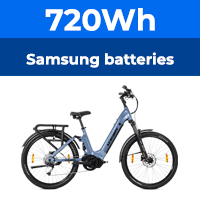What are the pro's and con's of cycle computers when used with an electric bike?
I'm guessing something that shows distance travelled is a good idea to enable battery range to be monitored, but is something more elaborate that monitors current usage worth having where hills are involved?
I'm guessing something that shows distance travelled is a good idea to enable battery range to be monitored, but is something more elaborate that monitors current usage worth having where hills are involved?







